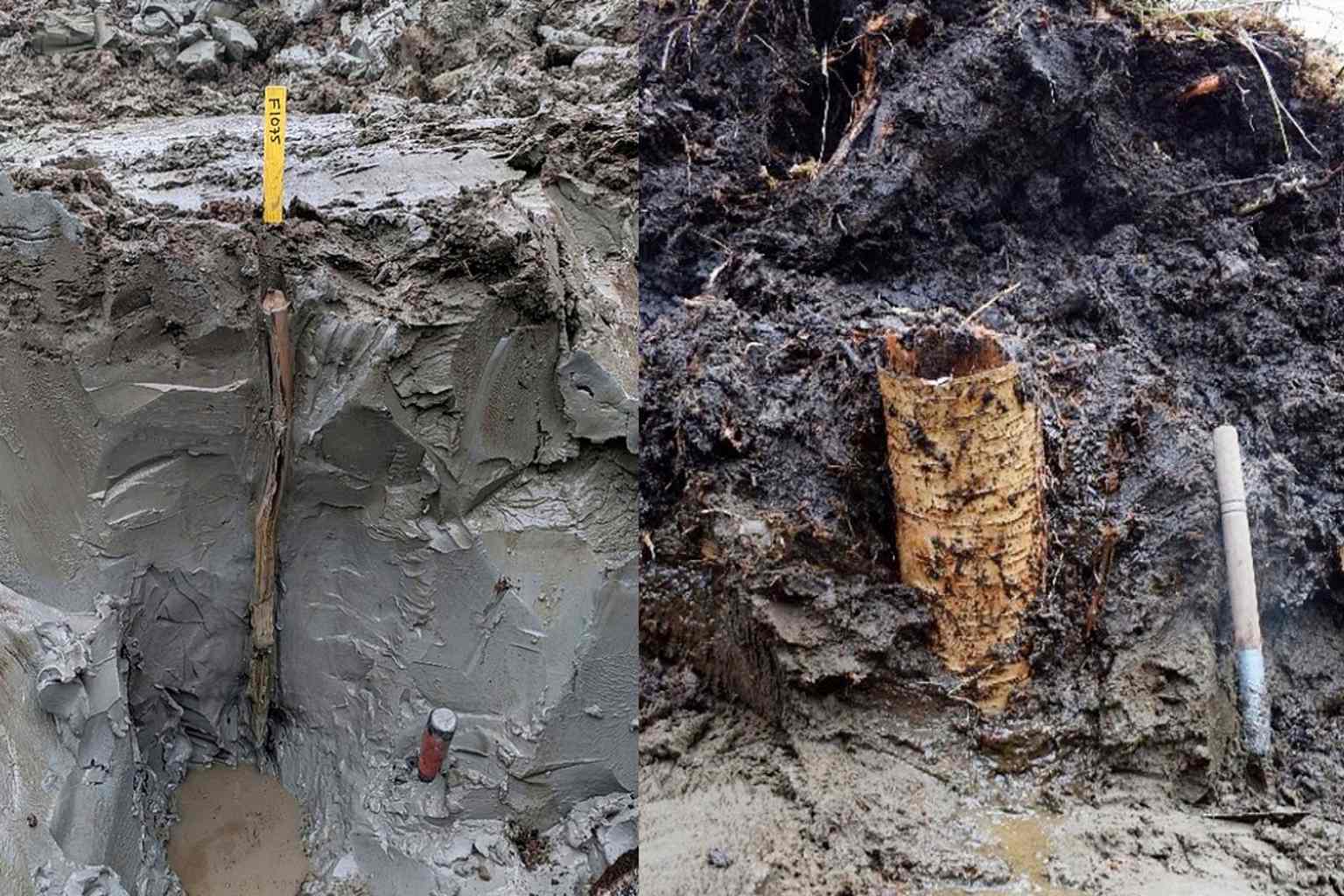Imagine discovering an ancient time capsule preserved for over 5,000 years beneath a swampy bog in Sweden. Picture wooden bridges, carved walking sticks, and woven baskets, all frozen in time, offering an extraordinary glimpse into the lives of prehistoric hunter-gatherers. This rare find near Järna, in the Gerstaberg region, is reshaping what we know about early life in Northern Europe.
The world beneath those peat bogs is a marvel of natural preservation, revealing how early humans thrived in an environment far different from today.
How prehistoric artifacts survived thousands of years in peat bogs
Peat bogs are nature’s own preservative vaults. Their unique environment lacks oxygen and has acidic conditions similar to vinegar, making it nearly impossible for bacteria to break down organic materials. This creates perfect circumstances for conserving wooden tools, baskets, and even human remains for millennia.
The discoveries in Sweden owe their survival to these anaerobic conditions. Wooden structures built from logs, stakes, and woven wicker remain intact, revealing how ancient people engineered bridges to cross lakes and wetlands. The same environment that preserved fruits in jars also locked away this prehistoric world beneath its surface.
I remember visiting peat bogs once and being amazed at the strange, otherworldly quality they hold. Knowing these soft, wet landscapes guard ancient secrets makes their quiet beauty even more compelling.
What the discoveries reveal about prehistoric life
These structures and objects belong to communities of hunter-gatherers who lived before widespread farming changed the way humans lived. They adapted by building intricate wooden pathways to navigate lakes and marshes in search of food.
One intriguing piece of this puzzle is the presence of sea buckthorn, a shrub with bright orange berries lining the shores of a long-gone lake. For the ancient people, these berries were a vital, nutritious food source — much like the superfood they’re known as today.
The wooden bridges and wicker baskets found suggest these communities had sophisticated systems for harvesting, fishing, and moving around their watery environment. Imagining these pathways bustling with activity brings history vividly to life.
Who might have built these ancient structures
Although archaeologists haven’t yet identified precisely which group created these relics, the evidence points towards the Pitted Ware Culture (PWC). This culture inhabited southern Scandinavia roughly between 5500 and 4300 years ago.
The PWC was renowned for their distinctive pottery, decorated with deep pits or impressions around their vessels. What makes them stand out is their commitment to a marine-centric lifestyle, relying heavily on seal hunting and fishing long after farming took root in other parts of Europe.
They were also skilled travelers and traders, navigating across the Baltic Sea and exchanging goods with farming communities. The network of stone tools and clay fragments found across Sweden, Denmark, and Finland paint a picture of a rich culture connected across vast distances.
How technology brings the past to life for modern audiences
A truly exciting development is the plan to reconstruct these wooden structures virtually. Experts will create detailed 3D models and videos, offering people around the world a chance to walk digitally on these ancient bridges. This virtual experience promises to transport visitors directly into the Stone Age.
This approach highlights a powerful trend: blending archaeology with modern technology to make history accessible and immersive. It’s inspiring to consider that early humans engineered such impressive solutions, connecting distant shores and shaping their world with their hands.
Reflecting on this find, I’m reminded of how patience and the right conditions can preserve stories for thousands of years—waiting for us to uncover and appreciate them. These relics are not just artifacts; they’re reminders of human resilience and creativity across time.
What amazes you most about this discovery—the advanced wooden bridge, the enduring hunter-gatherer culture, or the lasting relationship between humans and nature? Share your thoughts, spread the wonder of this prehistoric treasure, and join the conversation about our fascinating past!
